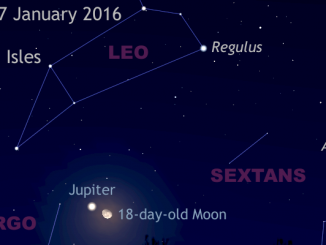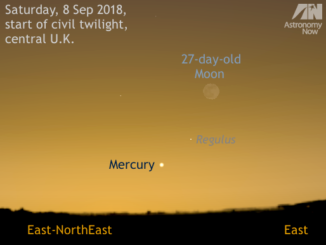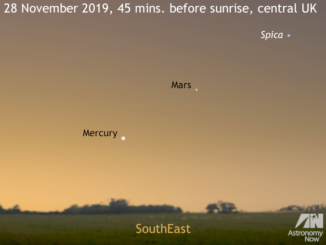
Observers in the British Isles can follow the nightly changing configuration between Venus and the Pleiades by looking low to the west in deep twilight shortly after 9:30 pm BST. If you have a pair of low-power binoculars of the 7 or 8x variety, then both the planet and open cluster will be in the same field of view over the coming week.
In the telescope, Venus has a waning gibbous disc that is about 75% illuminated and slightly less than 15 arcseconds in diameter. This means that a magnification of about 125x is required to make it appear as large as the Moon does to the unaided eye. By the end of April, Venus will be setting over four hours after the Sun and a truly dazzling sight in a dark sky. Then, at the beginning of May, it will be the turn of innermost planet Mercury to be near the Pleiades.
Inside the magazine
You can find out more about Venus and the Pleiades in the April edition of Astronomy Now in addition to a full observing guide to the night sky.
Never miss an issue by subscribing to the UK’s biggest astronomy magazine. Also available for iPad/iPhone and Android devices.




